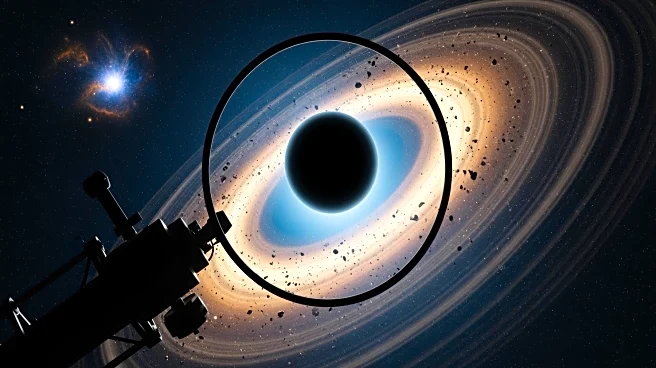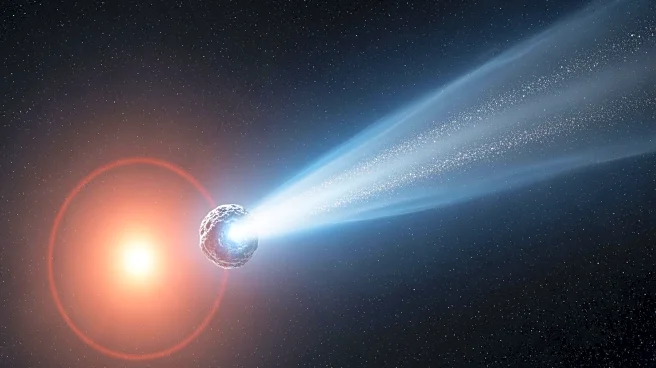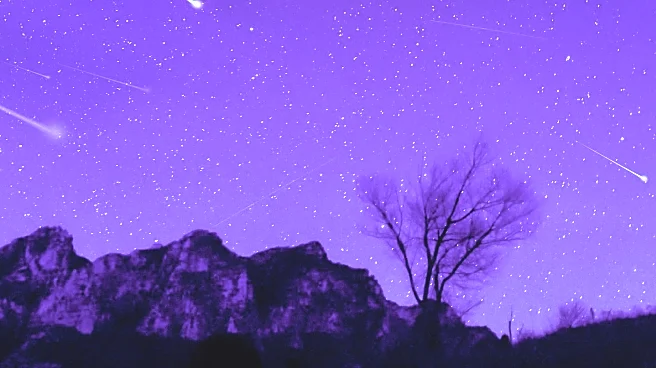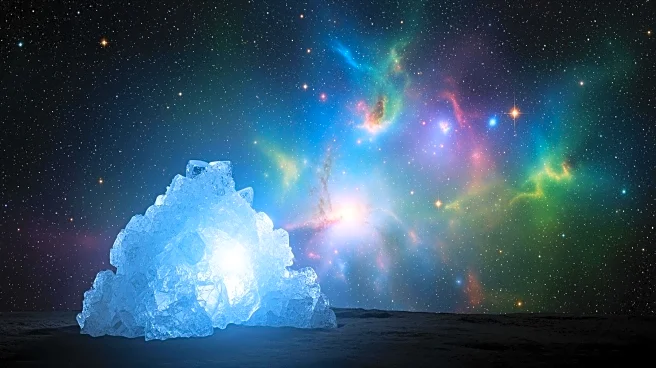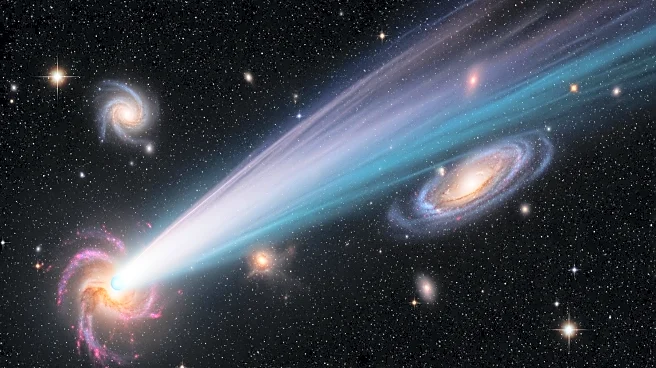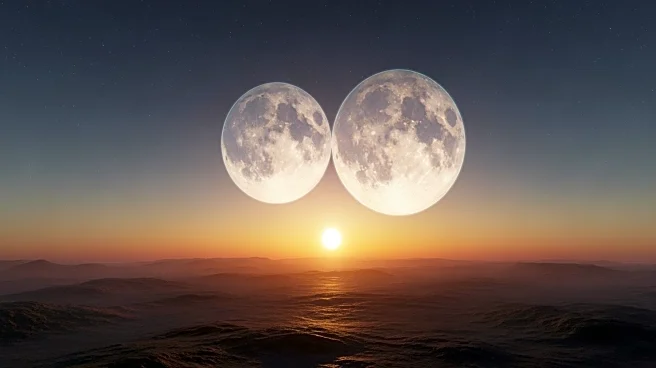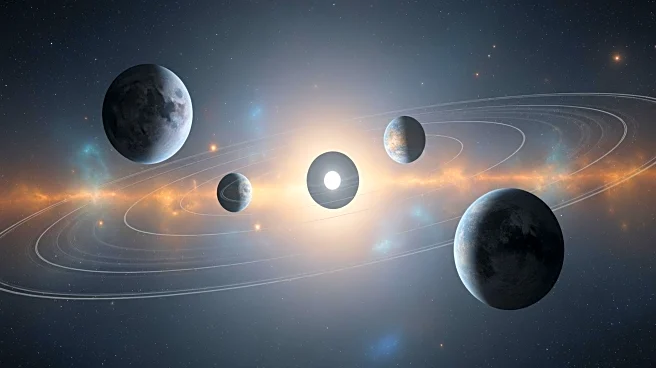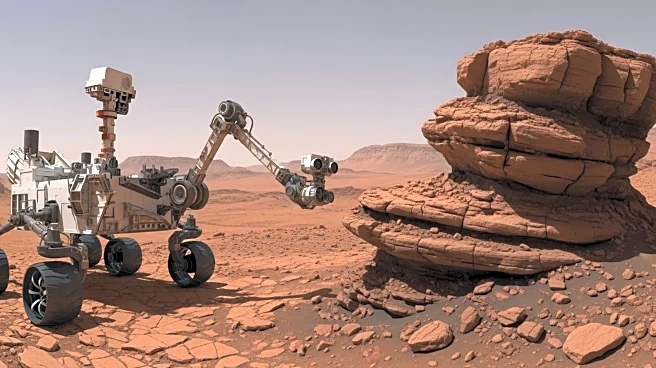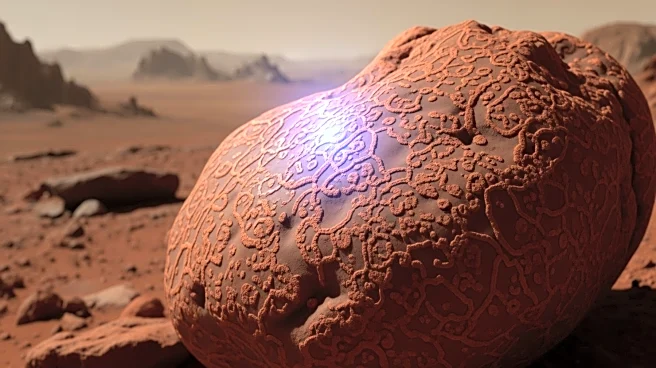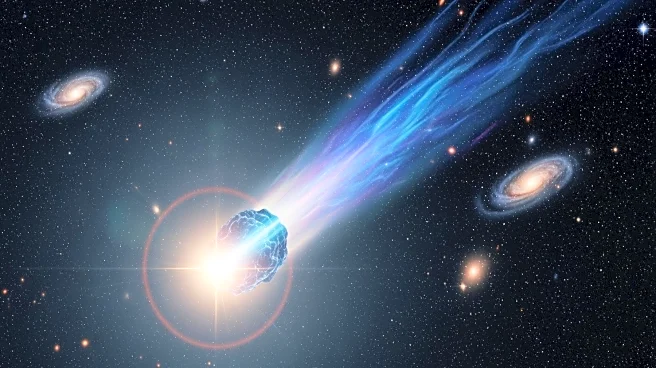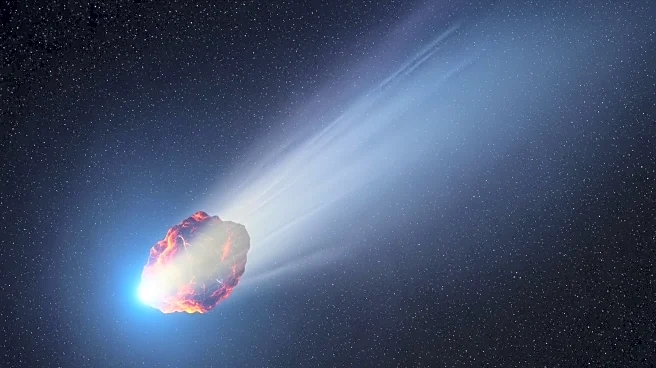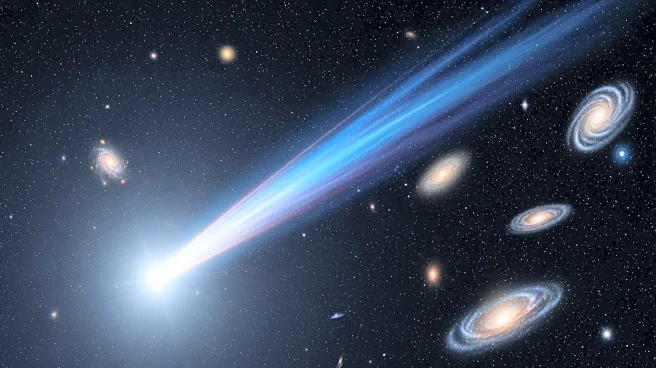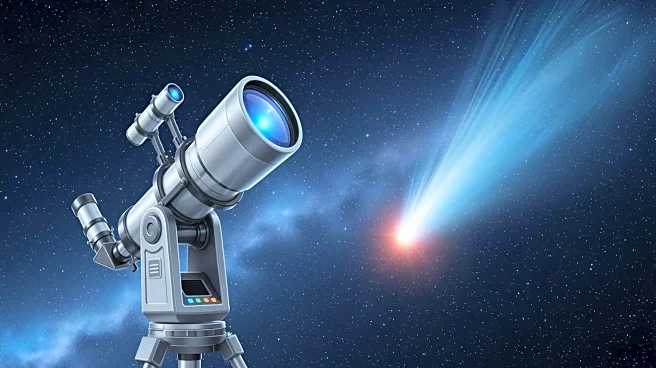What's Happening?
NASA's James Webb Space Telescope has made groundbreaking observations of a potential moon-forming disk surrounding the exoplanet CT Cha b, located 625 light-years from Earth. The telescope's data revealed the chemical composition and physical conditions
of the carbon-rich disk, which could serve as a birthplace for future moons. The star system, only 2 million years old, shows distinct activity between the planet and its star, separated by 46 billion miles. This discovery provides valuable insights into the formation of moons and planets, offering a comparison to the early history of our solar system.
Why It's Important?
The observations by the James Webb Space Telescope are significant as they offer a direct look into the early stages of planetary and lunar development. Understanding how moons and planets form is crucial for explaining the evolution of planetary systems across the galaxy. The findings could help scientists understand the conditions that might support life on moons, which are believed to outnumber planets. This research enhances our knowledge of cosmic formation processes and could inform future studies on the potential habitability of moons.
What's Next?
The research team plans to use the James Webb Space Telescope to study additional young planetary systems over the next year. This will allow them to compare the physical and chemical diversity among disks that may eventually give rise to moons. The continued observations aim to deepen our understanding of moon formation and the dynamics of young planetary systems, potentially leading to new discoveries about the universe's formation.
Beyond the Headlines
The study of moon formation has ethical and cultural implications, as it challenges our understanding of life-supporting environments beyond Earth. The research could lead to long-term shifts in how we perceive the potential for life in the universe, influencing future space exploration and the search for extraterrestrial life.
